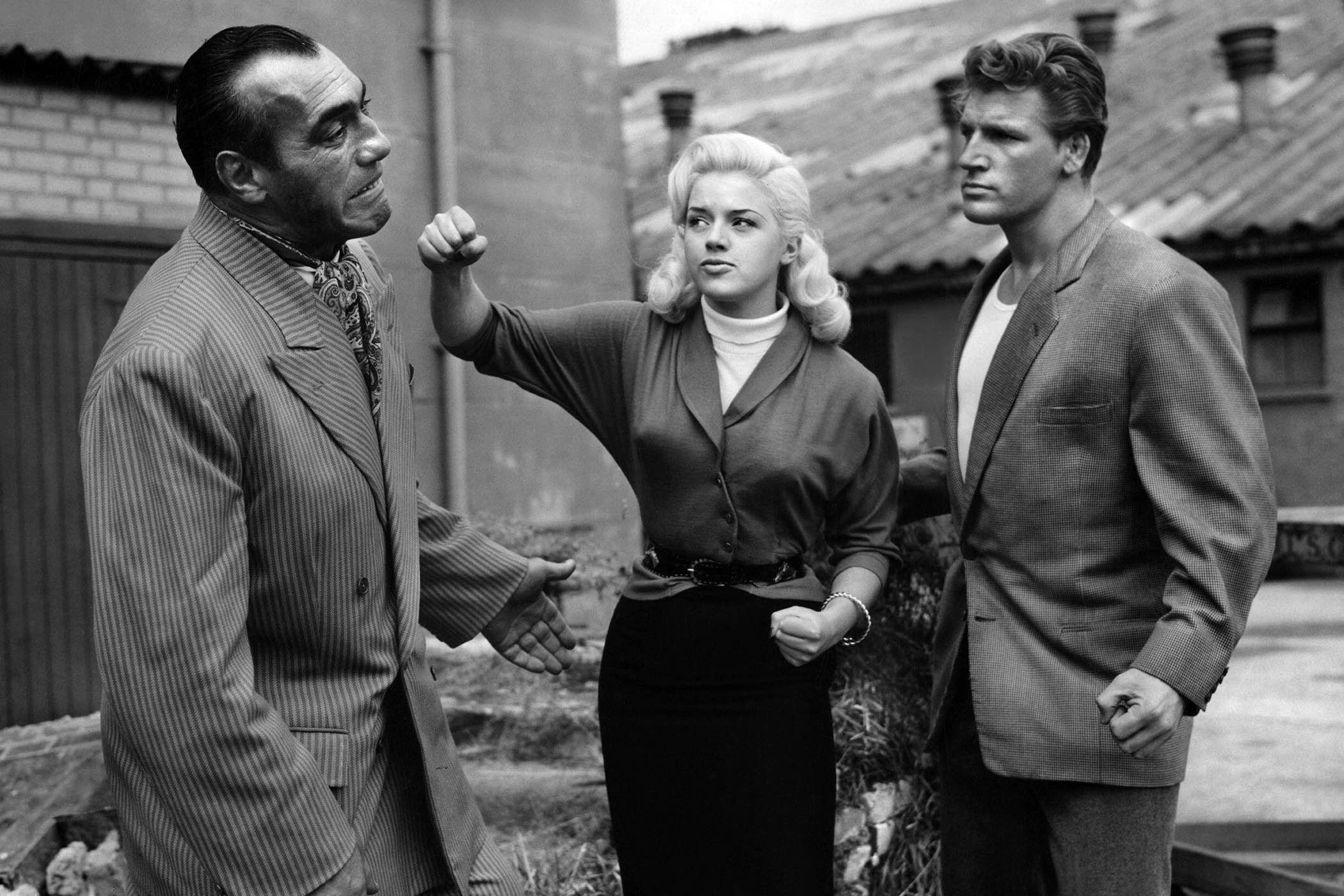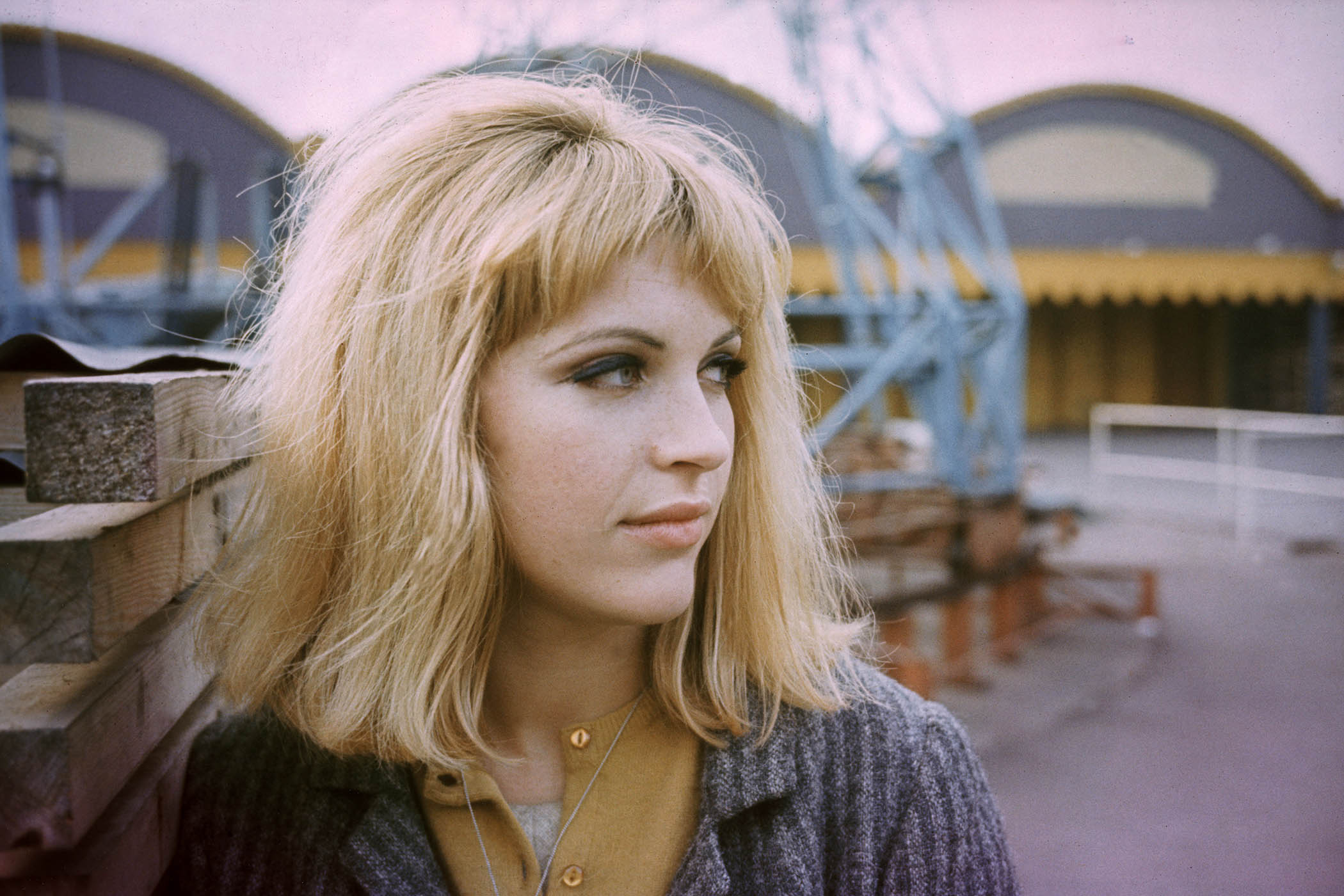It is quite rare to finish reading a 200-plus-page book without ever actually discovering what it’s meant to be about. British Blonde is published (very lavishly) by the Paul Mellon Centre for Studies in British Art, which leads one to expect that it will be about art. But no. Only one of its four main subjects, Pauline Boty, is an artist. The others are Diana Dors, Ruth Ellis (the last woman to be hanged in Britain) and Barbara Windsor. What links them? Well, they’re all British blondes who came to fame in the 1950s and 60s, but otherwise your guess is as good as mine.
Lynda Nead is a visiting professor at the Courtauld Institute, no less, so one expects her to write intelligible sentences, but how about this: “When Ruth Ellis entered the dock at the Old Bailey in her black, fur-trimmed, tailored suit, she represented much more than herself; she was the type of the age and its nemesis.” What type, what age, what nemesis? What nonsense, surely?
Nead’s subjects were all self-made blondes, ie they lightened their hair with peroxide. And in the postwar period this was quite a daring thing to do. Magazines were full of hair dye ads that equated blondness with glamour and suggested that “Blondes have more fun”. They urged: “Don’t be a ‘mouse’ – brush on Golden Shadeine”.
Ruth Ellis was so devoted to her blondness that she had her roots touched up before she went on trial in 1955. Her sister wrote: “From the time she started bleaching her hair, her character changed. It made her confident and more carefree.” So confident, in fact, that she shot her abusive boyfriend David Blakely and, when arrested, told the police, “I am guilty: I am rather confused.” Her trial only lasted one and a half days, and the jury took just 23 minutes to convict her.
Diana Dors (née Fluck) started dyeing her hair when she was just 12, and soon began entering beauty contests. She got her first film role at 16; in 1955 she was the only woman in a poll naming Britain’s top film stars, and was known as “the British Marilyn”. The tabloids loved her for her publicity stunts, such as appearing at the Venice film festival in a mink bikini, and because she was so frank and outspoken. The News of the World paid £35,000 for her memoirs. As she told a reporter: “I might as well cash in on sex now while I’ve got it.” But by the late 60s she realised that her brand of sex appeal was going out of style. The Daily Mail described her as “visually startling, almost to the point of caricature”. The Evening Standard observed in 1970: “She’s 38 and a long since faded sex symbol. Her face, always a bit on the podgy side, is now almost swollen.” Dors took it in her stride, as she always did: “I think my femininity outraged the English male, as well as excited him … Only, being English, the excitement was suppressed and the outrage voiced.”

Diana Dors with Primo Carnera (left) and Joe Robinson on the set of A Kid for Two Farthings (1952). Main picture: Pauline Boty.
Dors and Ellis took elocution lessons to “improve” their accents, but Barbara Windsor was happy to be known as “the Cockney sparrow” and was much loved for it. With her tiny, curvaceous figure and blonde beehive, she had, according to the Sunday Express, “the gorgeousness of a poor man’s Rubens”. Life magazine called her “a bonbon who can be funny merely by jiggling into view”. Her talent for comedy was best exploited in the Carry On films – she appeared in nine of them, starting with Carry On Spying in 1964. Like Dors, she later emerged as a considerable actress, but that is of no interest to Nead.
The one British artist who makes an appearance in the book is Pauline Boty, who was born in 1938, flourished at Wimbledon School of Art and the Royal College of Art, and featured as a promising pop artist in Ken Russell’s film Pop Goes the Easel. Her work was interesting, but there was not much of it because she was diagnosed with cancer while pregnant with her first child, refused treatment for fear of harming the foetus and died in 1966. Nead believes that “her work is rooted firmly in 1960s feminism and the belief in individual liberation as a form of radical politics”. No doubt – but that hardly puts her in the same bag as Diana Dors and Barbara Windsor. And Nead then moves straight on to the actresses Julie Christie and Carol White (who starred in Ken Loach’s Cathy Come Home and Poor Cow).
This is a beautifully produced book, with many interesting illustrations – film posters, advertisements for hair dyes, seaside postcards, covers of Picture Post, Life, etc – and a fascinating section on the short-lived craze for 3D films. But the very first illustration, the album cover of Sgt Pepper’s Lonely Hearts Club Band, brings with it the first deadly intimation of Nead’s prose. She writes: “There is a relationship, a narrative, that is almost hidden among the heads and bodies, which maps the evolution of Hollywood glamour and the fabrication of British Blonde.” She points to Mae West in the back row, Marilyn Monroe in the middle and Diana Dors in the front and opines: “These three characters tell the story of the export of American glamour to Britain in the postwar years … Subjected to the faultlines of British class, race and gender, Marilyn Monroe became Diana Dors, a figure who is distinctively and definitively British, embodying a narrative of the postwar nation.” If that makes sense to you, you’ll be fine with this book. Otherwise not.
British Blonde: Women, Desire and the Image in Post-War Britain by Lynda Nead (Paul Mellon Centre for Studies in British Art, £30, pp272). Order a copy from The Observer Shop for £27. Delivery charges may apply
Editor’s note: our recommendations are chosen independently by our journalists. The Observer may earn a small commission if a reader clicks a link and purchases a recommended product. This revenue helps support Observer journalism
Photographs: lead image of Pauline Boty by Michael Ward/Iconic Images; Diana Dors by Cinematic/Alamy
